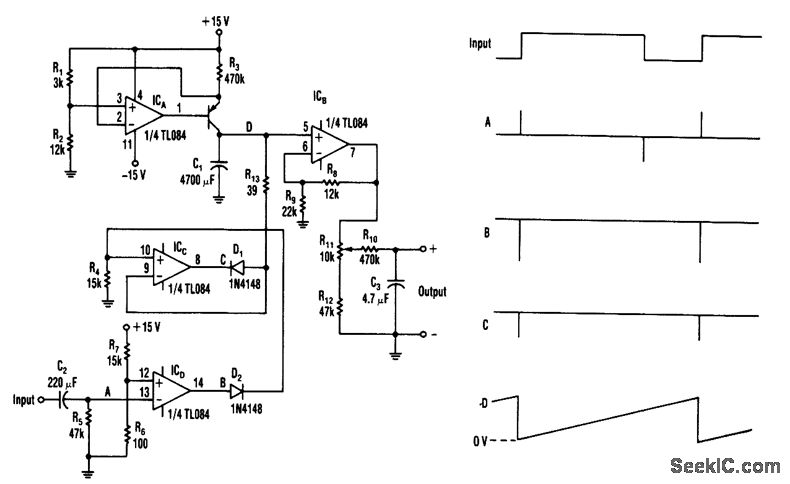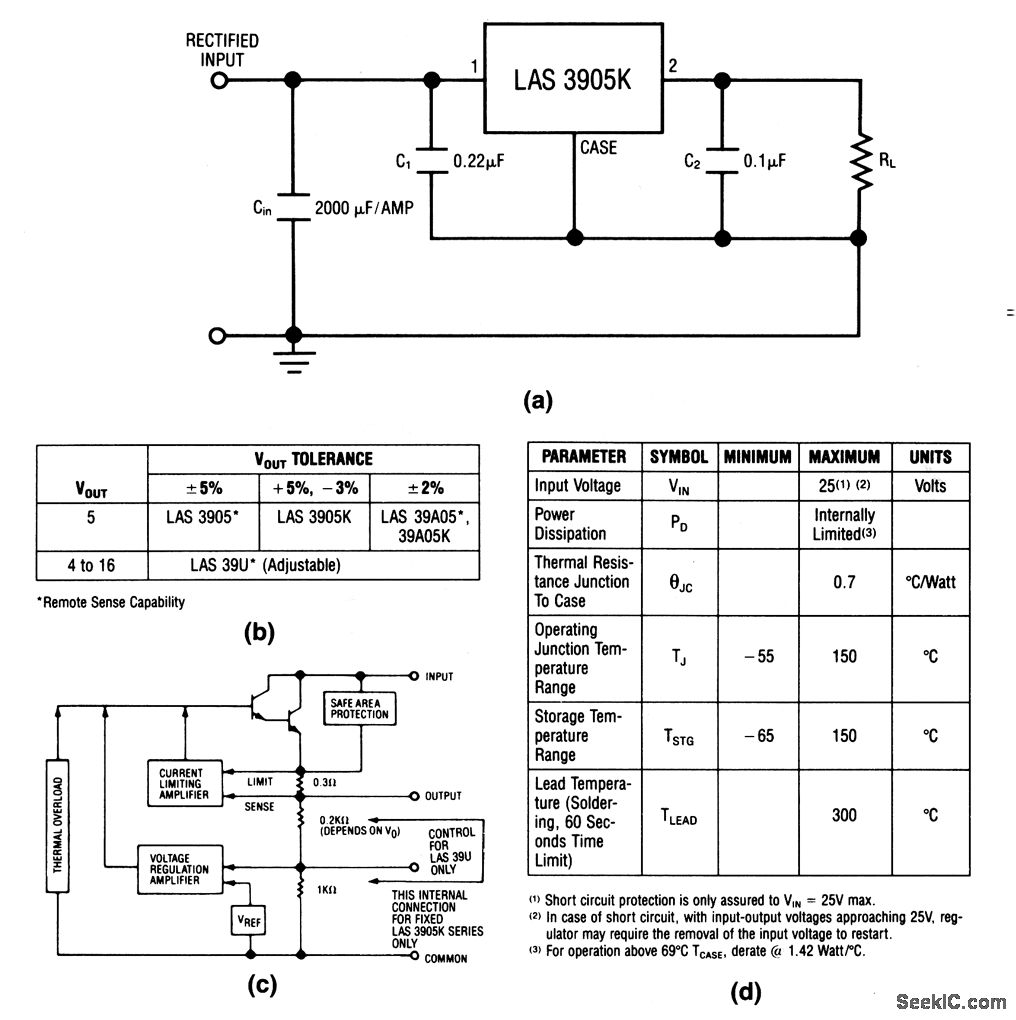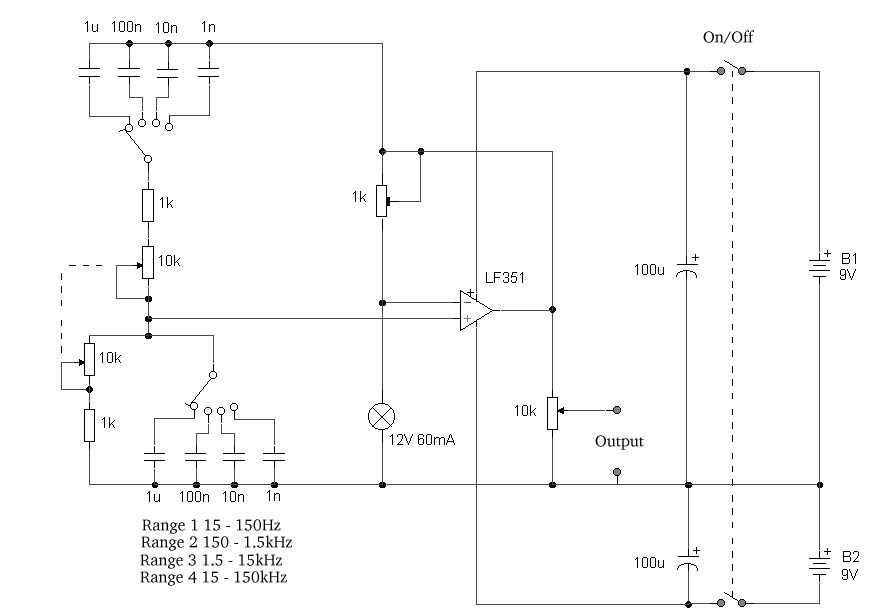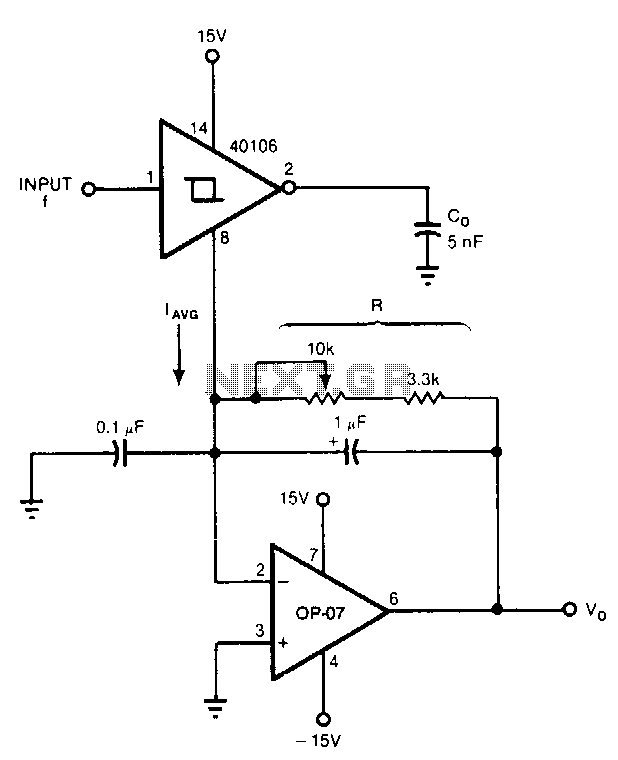
Voltage Controlled Oscillator

A voltage-controlled oscillator (VCO) is a type of oscillator in which the frequency of output oscillations can be adjusted by varying the amplitude of an input voltage signal. VCOs are commonly utilized in frequency modulation (FM), pulse modulation (PM), and phase-locked loops (PLL). Additionally, they serve as variable frequency signal generators. A block diagram of a typical voltage-controlled oscillator is illustrated below. VCOs can be classified into two main categories: linear voltage-controlled oscillators and relaxation-type voltage-controlled oscillators. Linear VCOs are typically employed to generate sine waves, utilizing an LC tank circuit to produce oscillations. An active component, such as a transistor, amplifies the output from the LC tank circuit, compensating for energy losses and establishing necessary feedback conditions. In this configuration, a varactor (varicap) diode replaces the capacitor in the tank circuit. The varactor diode is a type of semiconductor diode whose capacitance can be varied by adjusting the voltage across its junction. Consequently, modifying the voltage across the varicap diode in the tank circuit allows for the adjustment of the VCO's output frequency. Relaxation-type VCOs are designed to produce sawtooth or triangular waveforms through the gradual charging and sudden discharging of a capacitor connected to an active element (such as a UJT or PUT) or a monolithic IC (such as the LM566). Modern relaxation-type VCOs are often implemented using monolithic ICs. The LM566, produced by National Semiconductor, generates square and triangular waveforms simultaneously, with the output frequency adjustable via an external control voltage. The output frequency can also be programmed using a combination of external resistors and capacitors. Typical applications for the LM566 IC include signal generators, FM modulators, FSK modulators, and tone generators. The LM566 can operate on either a single or dual supply, with a single supply voltage range from 10V to 24V. The IC exhibits linear modulation characteristics and excellent thermal stability. The circuit diagram of a voltage-controlled oscillator utilizing the LM566 is presented below. Resistor R1 and capacitor C1 form the timing components, while capacitor C2 prevents parasitic oscillations during VCO switching. Resistor R3 provides the control voltage (Vc). Triangle and square wave outputs are available from pins 4 and 3, respectively. The output frequency of the VCO can be calculated using the appropriate equation.
In the design of a voltage-controlled oscillator, the choice of components is critical for achieving the desired frequency stability and modulation characteristics. The LC tank circuit in linear VCOs typically consists of an inductor (L) and a varactor diode (D) in parallel, which allows for precise frequency tuning by varying the reverse bias voltage applied to the varactor. The relationship between the capacitance of the varactor and the voltage across it is given by the varactor's capacitance-voltage (C-V) curve, which is essential for determining the frequency range of the oscillator.
In relaxation-type VCOs, the timing characteristics are primarily determined by the RC time constant of the charging and discharging circuit. The choice of resistor (R) and capacitor (C) values influences the frequency of oscillation and the shape of the output waveform. For instance, a larger capacitor will result in a slower charge and discharge cycle, producing a lower frequency output. The active element, such as a UJT or monolithic IC like the LM566, provides the necessary switching action to generate the waveform.
The LM566 IC, in particular, is advantageous due to its versatility and ease of use. It incorporates internal timing circuitry that simplifies the design process. The output frequency can be finely tuned by adjusting the external resistor and capacitor values, allowing for a wide range of applications. The IC's ability to generate both square and triangular waveforms simultaneously makes it suitable for various modulation schemes.
Overall, the voltage-controlled oscillator is a fundamental component in many electronic systems, enabling frequency modulation and signal generation with high precision and stability. Understanding the operational principles and design considerations of VCOs is essential for engineers working in communications, signal processing, and related fields.Voltage controlled oscillator is a type of oscillator where the frequency of the output oscillations can be varied by varying the amplitude of an input voltage signal. Voltage controlled oscillators are commonly used in frequency (FM), pulse (PM) modulators and phase locked loops (PLL).
Another application of the voltage controlled oscillator is th e variable frequency signal generator itself. Block diagram of a typical voltage controlled oscillator is shown below. Voltage controlled oscillators can be broadly classified into linear voltage controlled oscillators and relaxation type voltage controlled oscillators. Linear voltage controlled oscillators are generally used to produce a sine wave. In such oscillators an LC tank circuit is used for producing oscillations. An active element like transistor is used for amplifying the output of the LC tank circuit, compensating the energy lost in the tank circuit and for establishing the necessary feedback conditions.
Here a varactor (varicap) diode is used in place of the capacitor in the tank circuit. Varactor diode is type of semiconductor diode whose capacitance across the junction can be varied by varying the voltage across the junction. Thus by varying the voltage across the varicap diode in the tank circuit, the output frequency of the VCO can be varied.
Relaxation type voltage controlled oscillators are used to produce a sawtooth or triangular waveform. This is achieved by the gradual charging and sudden discharge of a capacitor connected appropriately to an active element (UJT, PUT etc) or a monolitic IC (LM566 etc).
Now a days relaxation type VCOs are generally realized using monolithic ICs. LM566 is a monolithic voltage controlled oscillator from National semiconductors. It can be used to generates square and triangle waveforms simultaneously. The frequency of the output waveform can be adjusted using an external control voltage. The output frequency can be also programmed using a set of external resistor and capacitor. Typical applications of LM566 IC are signal generators, FM modulators, FSK modulators, tone generators etc. The LM566 IC can be operated from a single supply or dual supply. While using single supply, the supply voltage range is from 10V to 24V. The IC has a very linear modulation characteristics and has excellent thermal stability. The circuit diagram of a voltage controlled oscillator using LM566 is shown in the figure below. Resistor R1 and capacitor C1 forms the timing components. Capacitor C2 is used to prevent the parasitic oscillations during VCO switching. Resistor R3 is used to provide the control voltage Vc. Triangle and square wave outputs are obtained from pins 4 and 3 respectively. Output frequency of the VCO can be obtained using the following equation: 🔗 External reference
In the design of a voltage-controlled oscillator, the choice of components is critical for achieving the desired frequency stability and modulation characteristics. The LC tank circuit in linear VCOs typically consists of an inductor (L) and a varactor diode (D) in parallel, which allows for precise frequency tuning by varying the reverse bias voltage applied to the varactor. The relationship between the capacitance of the varactor and the voltage across it is given by the varactor's capacitance-voltage (C-V) curve, which is essential for determining the frequency range of the oscillator.
In relaxation-type VCOs, the timing characteristics are primarily determined by the RC time constant of the charging and discharging circuit. The choice of resistor (R) and capacitor (C) values influences the frequency of oscillation and the shape of the output waveform. For instance, a larger capacitor will result in a slower charge and discharge cycle, producing a lower frequency output. The active element, such as a UJT or monolithic IC like the LM566, provides the necessary switching action to generate the waveform.
The LM566 IC, in particular, is advantageous due to its versatility and ease of use. It incorporates internal timing circuitry that simplifies the design process. The output frequency can be finely tuned by adjusting the external resistor and capacitor values, allowing for a wide range of applications. The IC's ability to generate both square and triangular waveforms simultaneously makes it suitable for various modulation schemes.
Overall, the voltage-controlled oscillator is a fundamental component in many electronic systems, enabling frequency modulation and signal generation with high precision and stability. Understanding the operational principles and design considerations of VCOs is essential for engineers working in communications, signal processing, and related fields.Voltage controlled oscillator is a type of oscillator where the frequency of the output oscillations can be varied by varying the amplitude of an input voltage signal. Voltage controlled oscillators are commonly used in frequency (FM), pulse (PM) modulators and phase locked loops (PLL).
Another application of the voltage controlled oscillator is th e variable frequency signal generator itself. Block diagram of a typical voltage controlled oscillator is shown below. Voltage controlled oscillators can be broadly classified into linear voltage controlled oscillators and relaxation type voltage controlled oscillators. Linear voltage controlled oscillators are generally used to produce a sine wave. In such oscillators an LC tank circuit is used for producing oscillations. An active element like transistor is used for amplifying the output of the LC tank circuit, compensating the energy lost in the tank circuit and for establishing the necessary feedback conditions.
Here a varactor (varicap) diode is used in place of the capacitor in the tank circuit. Varactor diode is type of semiconductor diode whose capacitance across the junction can be varied by varying the voltage across the junction. Thus by varying the voltage across the varicap diode in the tank circuit, the output frequency of the VCO can be varied.
Relaxation type voltage controlled oscillators are used to produce a sawtooth or triangular waveform. This is achieved by the gradual charging and sudden discharge of a capacitor connected appropriately to an active element (UJT, PUT etc) or a monolitic IC (LM566 etc).
Now a days relaxation type VCOs are generally realized using monolithic ICs. LM566 is a monolithic voltage controlled oscillator from National semiconductors. It can be used to generates square and triangle waveforms simultaneously. The frequency of the output waveform can be adjusted using an external control voltage. The output frequency can be also programmed using a set of external resistor and capacitor. Typical applications of LM566 IC are signal generators, FM modulators, FSK modulators, tone generators etc. The LM566 IC can be operated from a single supply or dual supply. While using single supply, the supply voltage range is from 10V to 24V. The IC has a very linear modulation characteristics and has excellent thermal stability. The circuit diagram of a voltage controlled oscillator using LM566 is shown in the figure below. Resistor R1 and capacitor C1 forms the timing components. Capacitor C2 is used to prevent the parasitic oscillations during VCO switching. Resistor R3 is used to provide the control voltage Vc. Triangle and square wave outputs are obtained from pins 4 and 3 respectively. Output frequency of the VCO can be obtained using the following equation: 🔗 External reference





